Why was the Colosseum built? There are practical reasons such as controlling the “mobs” or crowds of Rome. It was also used as a political device that would help senators garner votes. You could even say that it made Rome more safe since the structures for evens prior to the Colosseum were built from wood and easily caught on fire.
In the end, it was built for much more primal reasons. Imagine it’s an hour after sunrise and you’re surrounded by tens of thousands of people. Everyone is nervous – you can cut the tension with a knife. All of a sudden, the entire amphitheater roars to life, and the gladiators enter the Arena.
When Was the Colosseum Built?
It would be difficult to understand why the Colosseum was built without understanding when the Colosseum was built.
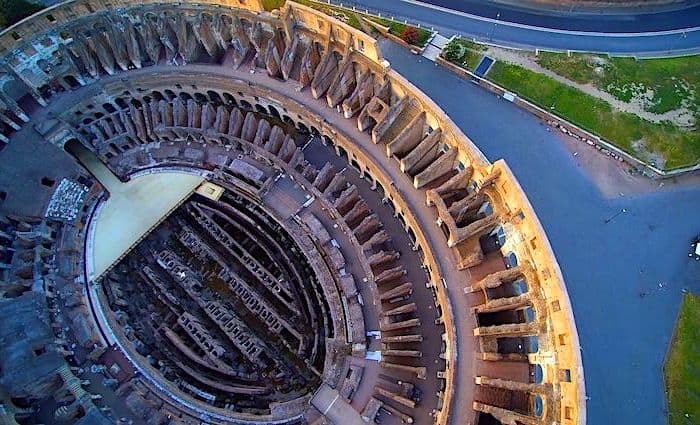
While it’s easy to romanticize history, life in Ancient Rome was anything but romantic. Like today, life for the common man was difficult. They worked from sun up to sun down and the idea of weekends didn’t exist. The Roman emperors understood this and needed to keep their people just happy enough to keep ongoing.
They also knew that without an outlet for their frustration, the citizens of Rome would revolt. Hence the expression: “Give them Bread and Circuses”. By setting up a welfare system and providing entertainment, people would be too distracted to start an uprising.
Who Built the Colosseum?
In 72 AD after quelling a revolt in Jerusalem that yielded endless spoils and slaves, Vespasian Flavian commissioned an ambitious project to build the largest amphitheater known to man. His goal, make his subjects happy so he could continue with expanding the Empire.
Vespasian became Roman Emperor in 69 A.D. After Emperor Nero’s assassination. Vespasian was the fourth Emperor that year which makes it safe to say 69 A.D. was a year of civil unrest. As Rome’s fourth new emperor that year he realized stability was key to not introducing a fifth emperor.
We don’t know who the Roman Colosseum’s architect was or the number of people involved in its construction. However, it’s safe to assume that tens of thousands of slaves were involved in building such a massive structure.
What we do know is, it only took eight years to build and its construction was from travertine, tufa, brick and wood. It stands almost 2000 years old today and would likely look much better had it not been for the 1000 years of pillaging and treating it like a quarry for stone.
Top Colosseum Tours
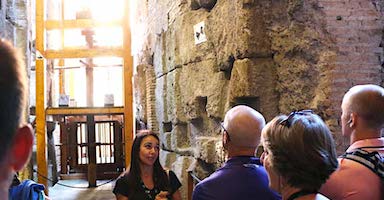
Best Seller
Colosseum Underground Tour with Roman Forum and Palatine Hill
Only 2% of visitors to the Colosseum are able to see the Underground, making tours a rare, exclusive experience. Our tours give you access to the Underground, Arena Floor, and first and second tiers—areas most people never see. Skip the line and enjoy priority access, guided by an expert who brings the Colosseum’s rich history to life. These spots sell out quickly, so don’t wait—secure your place now for this unforgettable opportunity.
See Prices
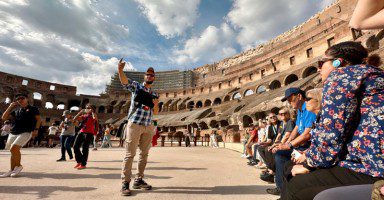
Customer Favorite
Special Access Colosseum Arena Floor Tour Through the Gladiator’s Gate
Reaching the Colosseum’s Arena Floor is no easy feat; tickets sell out quickly, leaving most visitors stuck in crowded corridors with limited views. With us, bypass the lines and enter through the Gladiator’s Gate to stand on the Arena Floor, giving you a front-row view of Rome’s nearly 2,000-year-old symbol of power and glory. With your friendly guide, uncover the Colosseum’s brutal past, then continue to the Roman Forum and Palatine Hill to explore the epicenter of ancient Roman life.
See Prices
What was the Colosseum used for?
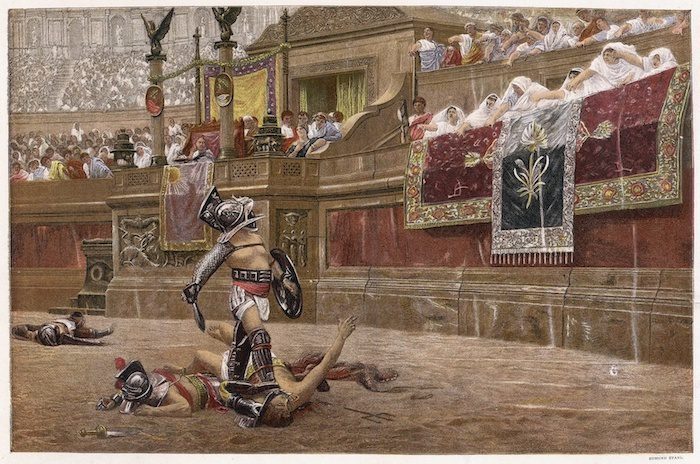
Mainly, the Colosseum was used for gladiatorial contests. These contests took on many forms; from animal hunts, to group battles to one-on-one competitions.
In addition, the arena witnessed public executions. Trained for years in the Ludus (gladiator school), these fighters duked it out for the entertainment of Roman citizens.
While it seems cruel to our modern minds, gladiators were worshiped as idols. As a testament to their popularity, the games went on for over three hundred years.
Where is the Colosseum
The Roman Colosseum is located in Piazza del Colosseo. You can get there by using:
- Metro line B: Colosseo Stop.
- Tram 3: Stops right in front of the Colosseum.
- Tram 8: The last stop is Piazza Venezia. From there, walk 10 minutes to the Colosseum.
- Bus: 75, 81, 673, 175, 204.
- Walking: depending on where you’re staying in Rome
Colosseum Opening Hours
- January 2nd to February 15th: 8:30 am – 4.30 pm, Last entrance 3:30 pm
- February 16th to March 15th: 8:30 am – 5 pm, Last entrance 4 pm
- Mar 16th – Last Saturday of March: 8:30 am – 5:30 pm
- Last Sunday of March – Sept 30th: 8:30 am – 7:15 pm
- Oct 1st – Oct 26th: 8:30 am – 6:30 pm
- Oct 27th – Dec 31st: 8:30 am – 4:30 pm
- Colosseum CLOSED: January 1st, May 1st and December 25th
Ticket office: Closes one hour before closing time
Colosseum Tours
Top Colosseum Tours

Best Seller
Colosseum Underground Tour with Roman Forum and Palatine Hill
Only 2% of visitors to the Colosseum are able to see the Underground, making tours a rare, exclusive experience. Our tours give you access to the Underground, Arena Floor, and first and second tiers—areas most people never see. Skip the line and enjoy priority access, guided by an expert who brings the Colosseum’s rich history to life. These spots sell out quickly, so don’t wait—secure your place now for this unforgettable opportunity.
See Prices

Customer Favorite
Special Access Colosseum Arena Floor Tour Through the Gladiator’s Gate
Reaching the Colosseum’s Arena Floor is no easy feat; tickets sell out quickly, leaving most visitors stuck in crowded corridors with limited views. With us, bypass the lines and enter through the Gladiator’s Gate to stand on the Arena Floor, giving you a front-row view of Rome’s nearly 2,000-year-old symbol of power and glory. With your friendly guide, uncover the Colosseum’s brutal past, then continue to the Roman Forum and Palatine Hill to explore the epicenter of ancient Roman life.
See Prices
Here’s Where To Stay in Italy’s Most Popular Destinations
Rome, Florence, Venice, Amalfi Coast, and Capri
Popular Tours from Rome
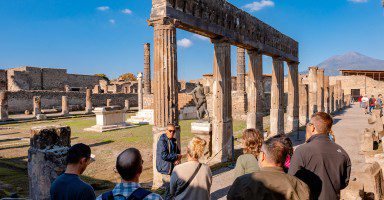
Best Seller
Unforgettable Rome Day Trip to Pompeii and Sorrento
Making a day trip from Rome to Pompeii and the Amalfi Coast can be daunting, with long travel times, complex routes, and tricky logistics to manage. Our full-day tour eliminates the stress, offering comfortbale transport straight to Pompeii. With an archaeologist guide, explore the ancient ruins without the hassle. Then, unwind with free time in Sorrento’s coastal charm. Led by a local guide and small group, this trip makes experiencing Italy’s highlights easy and enjoyable—all in one day.
See prices and more info
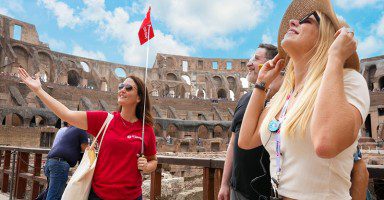
Best Seller
Rome in a Day Tour with Colosseum & Vatican Museums
Seeing the best of Rome in a single day might seem like a big undertaking, but our expertly designed tour makes it effortless with skip-the-line tickets, included transportation, and engaging guides to lead the way. In just 7 hours, you’ll visit renowned sites like the Sistine Chapel, Colosseum, Trevi Fountain, and Pantheon. With fascinating stories at every stop, you can skip the stress and immerse yourself in the vibrant heritage and culture of Rome all in one remarkable day.
See prices and more info
There are two things extremely important to me when in Rome- Eating well and taking an awesome tour. If you find yourself close to the Colosseum, it can be tricky to find the right place to eat that isn’t totally a tourist trap. Take a look at our Best Restaurants near the Colosseum.
While you can definitely see the Colosseum by yourself, I highly recommend a guided tour, due to the sheer number of amazing stories they will tell you about this place. With 2,000 years of history behind it there are plenty, so check out the Best Colosseum Tours to take and why.

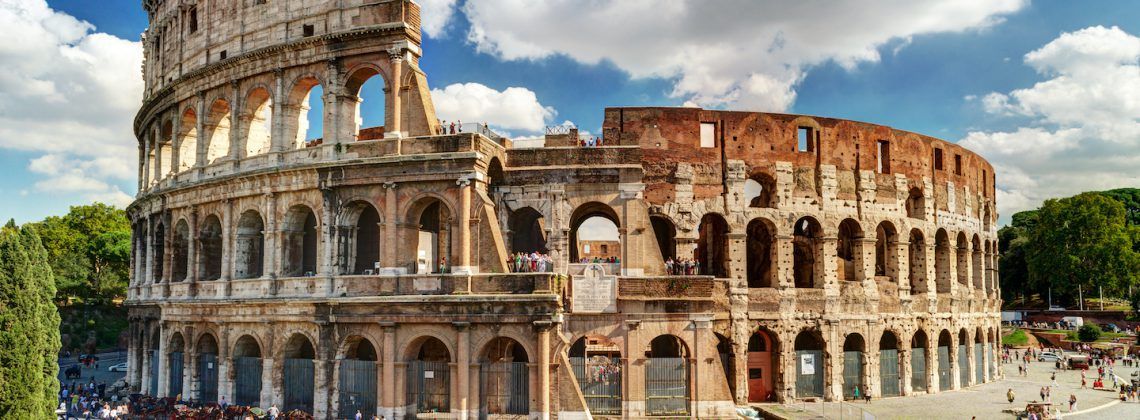
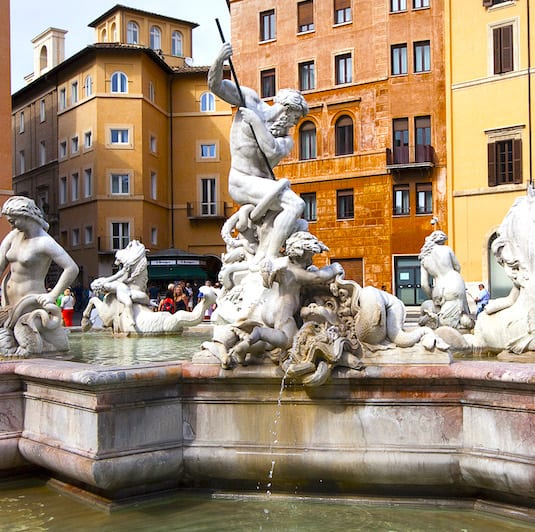
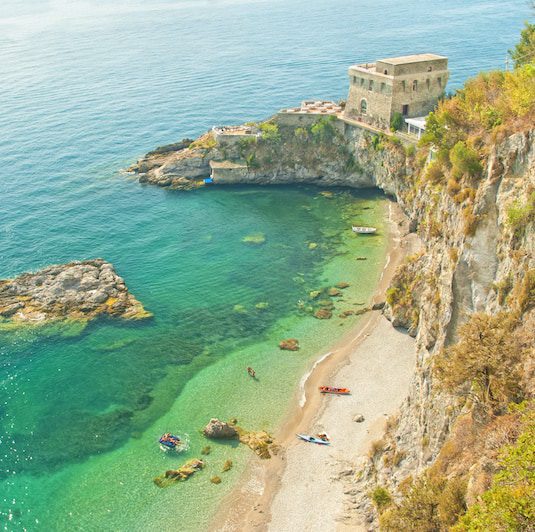
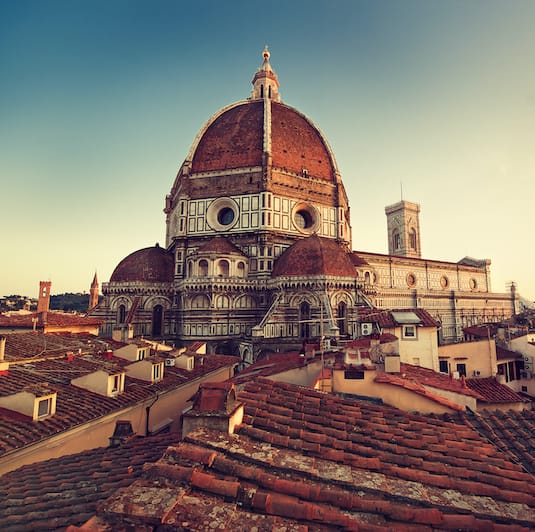
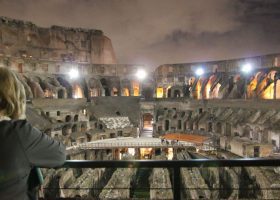
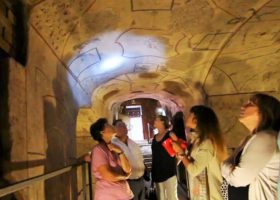

I Love To Pay A Visit If Am Disposed